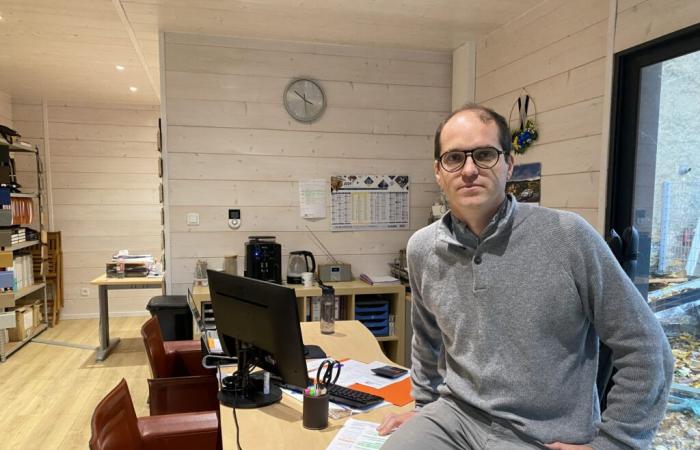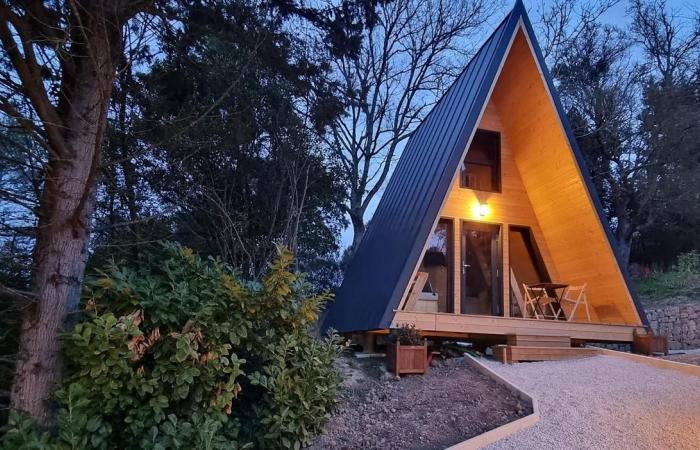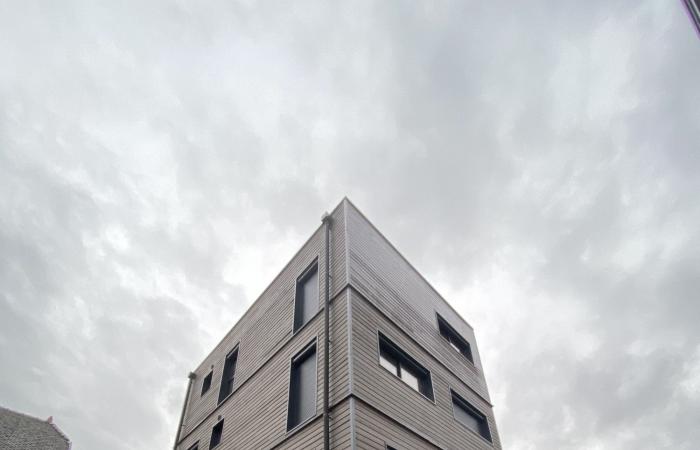When he started in 2004 with his brother Olivier in the design of wooden frame house “as accessible as possible in terms of quality and price”, Damien Roy integrated a “very small market: at the time, 3 to 4% of houses were made of wood”. It was the time when their business, ID Wooden Houseworked on behalf of developers, architects, project managers and built works of 100 to 200 m2.
Ten years ago, change of direction. The company specializes in the small wooden frame house from 20 to 70 m2tired of lacking visibility regarding the order book, and therefore, investment prospects. ID Maison Bois, created in Loire-Atlantique but established for 13 years in Bassens, near Chambérychooses to rush into this niche market shunned by manufacturers because it involves “small budgets and small projects”. And it works.
Small wooden frame house: young people, fans of smaller surfaces
The product addresses several issues: student accommodation, rental investment, alternative to a retirement home by settling in your children's garden while maintaining your independence. Without forgetting the primo-accessionout of desire “to no longer necessarily have a big house” and by economic necessity, all the more marked by the crisis. “In three years, the French have lost 30 m2 of living space with the same budget”states Damien Roy.
ID Maison Bois has already built, since its beginnings, more than 1,000 houses throughout France. The company now employs around ten people and produces nearly 4 million euros of turnover. For Damien Roy, wood is everything: “ecological, renewable, biosourced, light, easy and quick to implement and ensuring hygrometric comfort”.
The company offers eight house models on its website, “open to tailor-made”offering the possibility of modifying windows and doors without added value. “It’s complicated to impose a standard house, because a construction must take into account the land and the sun.” ID Maison Bois takes care of everything, except networks and earthworks. The building permit, included in the price, is delegated to a design office.
ID Maison Bois: installation of slabs on pedestals or piles, minimally invasive
If ID Maison Bois offers small areas, such as tepees, studios or garden officesa niche monopolized by many players, it mainly produces 50 m houses2. Its buildings, up to standards RE2020use spruce wood and of 100% European firfrom Scandinavia and Austria and biosourced materials.
The interior joinery is made of solid wood, the windows are made of wood, PVC or aluminum, the cladding is made of wood or fiber concrete panels. The roofs are either flat, with a natural rubber coating, or sloped, covered with slates, steel tiles, traditional tiles, depending on town planning constraints. Depending on the customer's wishes, the insulation can be wood wool or glass wool.
“What drives us is being independent and being in the dry sector, where there is no waiting time for the materials to dry”confides Damien Roy. Almost all of the houses are built on fully insulated wooden slabs, resting on piles or studs. Minimally invasive technique which allows the ground to breathe by raising itself by 20 to 25 centimeters.
Result: an insulated slab, with no drying time to respect, installed during the day, and a house free from water and air after two to three days. The delay can increase to two or three weeks in the event of construction on site. Everything is prefabricated in a workshop mainly around Nantes, with certain elements being subcontracted to industrial partners in Europe.
Heading towards modular construction and small collectives

Damien Roy does not hide his intention to develop the modular constructionby increasing it from 25% of its turnover to 45%, attracted by its advantages: reduced construction time, increased safety and comfort for fitters, not subject to the vagaries of the weather, thus enhancing jobs. The solution is not always possible due to accessibility constraints or the presence of electrical cables preventing the arrival of a crane.
Another track, that of collective housing. “The construction market took a turn 10/15 years ago, accelerated in metropolises, where the principle of the individual house is disappearing to save land. Market largely dominated by concrete. We would like see more wooden frame buildings, with shorter construction times and bio-sourced materials. It's better for the planet.”judge Damien Roy.








